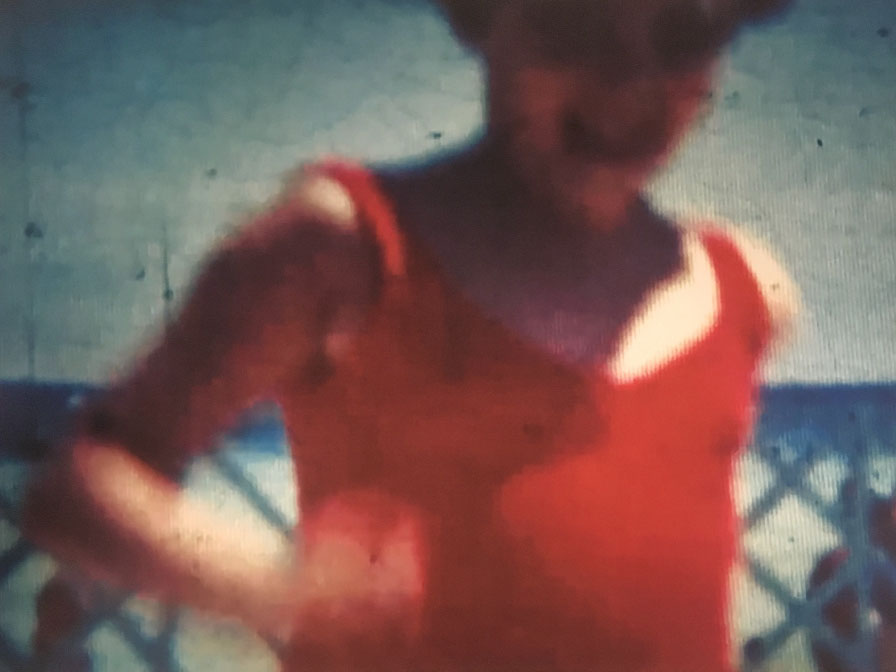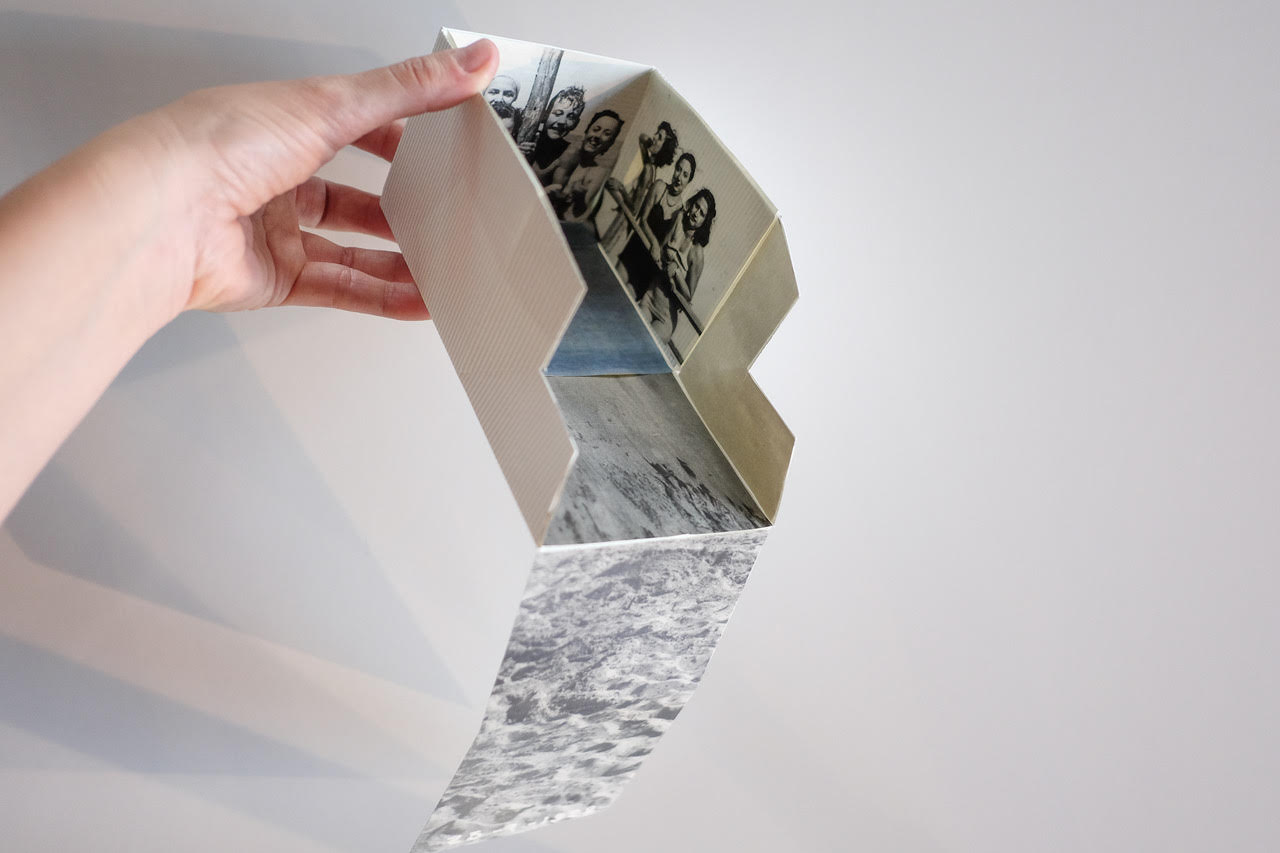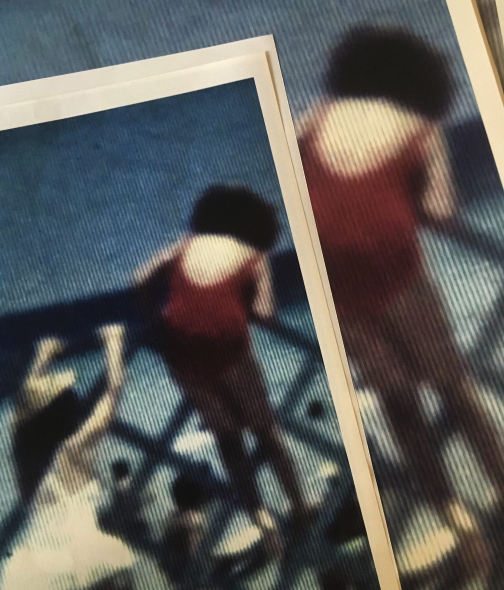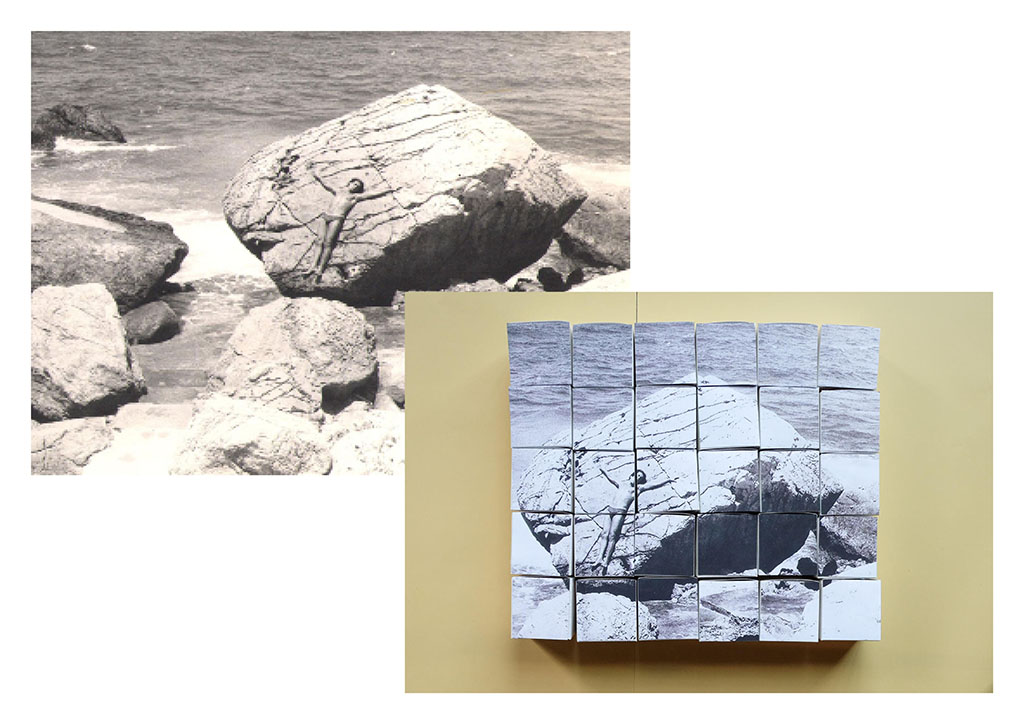Novella Oliana, artist
LO SPAZIO NECESSARIO (2019, in progress)
LO SPAZIO NECESSARIO is a workshop focusing on the concept of the archive, considered as a place for reflecting on identity issues and on the representation of complex realities, determined by sudden transformations of the map and the territory. It is an interactive research programme which uses the photograph archive kept at the Eco Museo Urbano Mare Memoria Viva, based in Palermo.
Curated by Novella Oliana and Michela Palermo, in collaboration with Eco Museo Mare Memoria Viva and MINIMUM participants (Pierluigi Bizzini, Anna D’Elia, Annamaria Fricano, Gerlando Giaccone, Gloria Guglielmo, Maria Concetta Immè, Giuseppe Iannello, Valentina Sestieri, Giuseppe Scafidi, Laura Tellini), the project is the result of a collaborative research workshop: it will soon become a publication.
Eco Museo Mare Memoria Viva is a collection born with the aim of recomposing – through different contributions by several families from Palermo – the collective and private memory of the southern coastline of the city, brutally modified by urban demolitions and reconstructions in the 60s. One of the most evident consequence of this aggressive action is the increased distance between the sea and the city. The workshop explored this distance, by following the “method of loci” and focusing on the relationship between memory, image and place. A new narrative path has been nailed down in order to inhabit the distance between the sea and the city. Several bi-dimensional and tri-dimensional paper devices have been suggested to participants who have been able to create new “loci” (places, clusters). Those ones, like spans of space and memory, have defined new borders by manipulating and bending the visual surface of the images. In this new mental architecture, archive material (images, stories, videos) has been rescued and restored to collective and private history. The vanishing power of images has been on focus, as well as several major issues of contemporary photography. In this way, plain paper sheets or bombonnière boxes, have changed their semantic function to become receptacle for new invented “souvenirs”.
On which fields of knowledge are you focused?
My research field comprises practice and theory of art as well as photography and visual arts.
What is the object of your research?
The representation of the Mediterranean space (particularly its sea surface): this geographic and symbolic surface coincide with the place where I engage in the construction of performative images, i.e. the focus of my creative process and my conceptual discourse.
Could you identify some constants in your work?
Trans-disciplinary approaches shifting from sciences (mathematics, physics, neuro-aesthetics) to philosophy and sociology. I use personal and other’s memory and mix my own private and collective symbols to create “small systems” of thoughts and imagination. I reflect upon the dynamics between text and images, verbal and visual actions.
How did you find out about Aby Warburg’s work? What interests you the most?
I ‘officially’ discovered Warburg through a friend at the very beginning of my Ph.D. research in 2015; I then realized that I was already acquainted with his work when I undertook a research project at the Fondation Arabe pour l’Image in Lebanon. At those time, in 2004, I was interested in the interaction of images and in the way they create new meaning by the simple act of clustering them: Warburg’s work on this issue stroke me as an original contribution. Today I am still engaging with this topic, adding to it a more recent interest on the psychological impact of Warburg’s work. In my projects I reflect on the possibility of relating geographical spaces to imaginary inner worlds, I use Warburg’s diachronic and interdisciplinary approach. His influence on my procedures allowed a new way of understanding images as tridimensional and heterogeneous forms.
How would you describe an Atlas?
A diachronic, tridimensional visual experience.
Atlas as a conceptual, formal and mnemonic device; do you use it in your work?
I see it in the way I use images as triggers for building small systems, personal and collective imaginaries.
Do you know about the existence of Mnemotechnics?
Yes, I do.
Which mnemonic system guides the organization of your material?
I am inspired by the Loci method, Giulio Camillo’s Memory Theatre and Ars magna.
Are there visual and emotional formulas (pathosformeln) in your project?
Yes, especially in the construction of “small systems” but they apply to my hole research projects.
In your work, do you identify formal or conceptual recurrences such as repetitions and disruption, distance and proximity, identity and migration, conflict and colonization?
I work with two main processes of construction and deconstruction of images; those are visual structures that I name “event-images”. An “event-image” is a procedural and conceptual work frame through which images are conceived and installed; they involve gestures and they create paradigms of proximity and distance where ideas migrate. This concept is related to my interest in the performativity of images and they relationship with movement. In my approach images, like ideas, can be displaced and transformed. In this way they can create a narration which is also a mental and physical itinerary where my artistic discourse develops. This visual path coincides with a mental path that take form through images, movements and body’s perception.
In your work, what is the balance between image and text?
My work is a constant translation of images through words, and words through images. In my work I use the concept of performativity of the language (cf. John L. Austen, Judith Butler, John R. Searle) and I apply it to images: body, actions and perception converge in my visual creation. When I use texts in my work they function basically as images by recreating visual paths and heuristic models.
Thinking about Warburg’s ‘good neighborhood rule’, what are the books that underpin your project?
BASSIL, Karl, ZAATARI, Akram, MAASRI, Zeina, RAAD, Walid, Mapping sitting. On Portraiture and Photography, Beirut, Mind the gap
edition & Fondation Arabe pour l’Image, 2005.
GOODMAN, Nelson, Ways of worldmaking, Indianapolis, Hackett Pu. Company, 1978.
MALRAUX, André, Le musée imaginaire, Paris, Gallimard, 1996.
NERI, Louise, RESPINI, Eva (ed.), William Forsythe. Choreographic Objects, Munich, NY, Boston, Del Monico Books-Prestel, 2018.
PIPER, Adrian, Meta-arte, Milano, Castelvecchi, 2017.
RICHTER, Gerhard, Atlas, Heltum Friedel (ed.), New York, Dist. Art Publisher, 2007.SUTER, Batia, Parallel Encyclopedia #1, #2,
Amsterdam, Roma Publications, 2007/2016.
Novella Oliana (Trani, 1978) is a visual artist and researcher, working on theory and practice of artistic research. In her perspective the image is a result of a performative action, it spreads out of an embodied knowledge. In her work she uses photography, video and writing. She currently reflects on the visual representation of the Mediterranean area and its sea surface. With a background in cultural studies relating to the Mediterranean and the Middle East, she is currently a PhD candidate in Visual Arts at Aix-Marseille University (France). Her work Stanze, spazi, Universi is part of her publication Chambres, universes: fragments d’un espace inventé, in Espaces d’interférence narrative. Art et récit au XXI siècle, (ed. Jean Arnaud), PU MIDI, Toulouse, 2018. In February 2020 a selection of her Ph.D. research was exhibited with Mario Cresci’s photographs at Red Lab Gallery, Milan (Fra noi e le cose, curated by Gigliola Foschi). She lives and works in Rome and Marseille.



